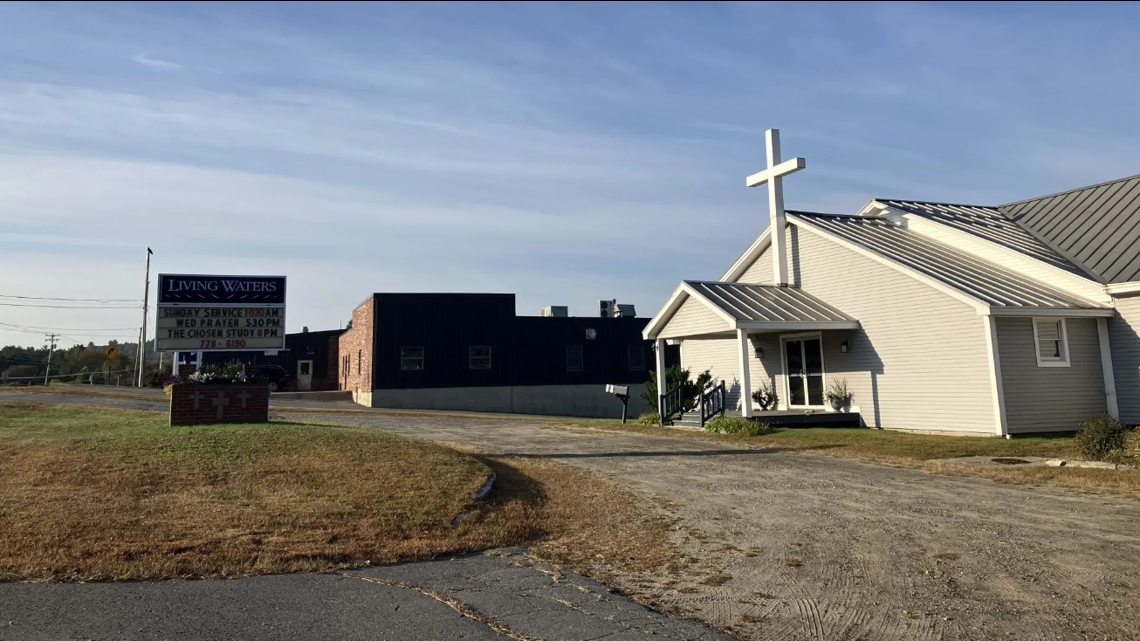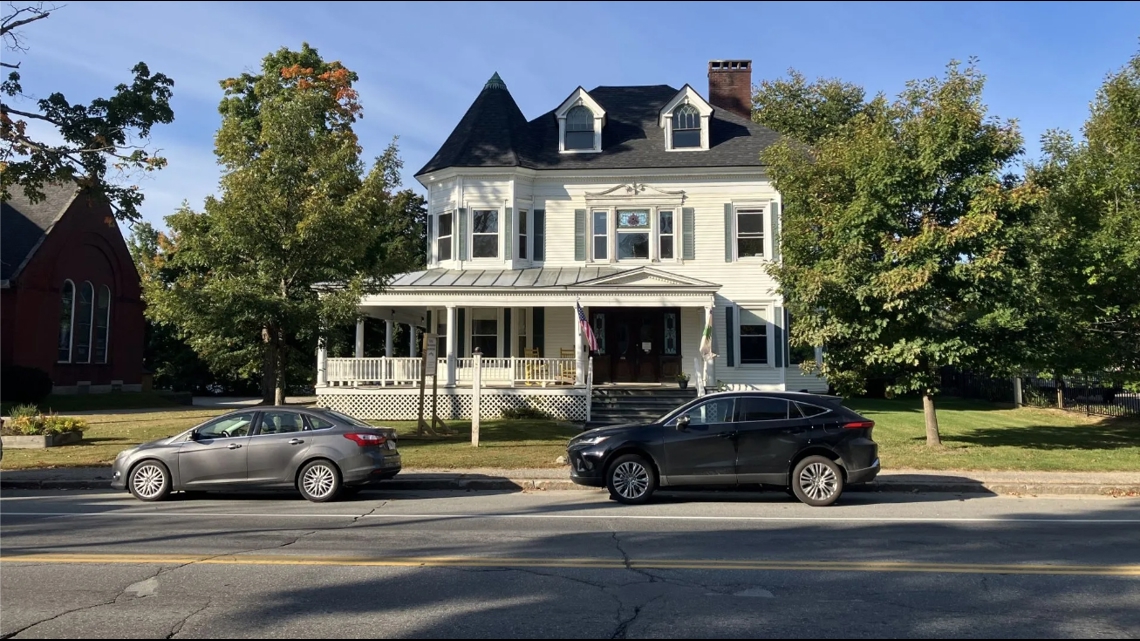FARMINGTON, Maine — It has been more than four years since Farmington’s only emergency homeless shelter closed. Today, despite efforts by advocacy groups, there are no emergency shelter beds in the western Maine town — or elsewhere in Franklin County.
That’s been the case since 2020, when Western Maine Homeless Outreach (WMHO) closed during the height of the COVID pandemic. In the past five years, two attempts to bring low-barrier, emergency shelter beds into Farmington failed.
Police now transport some people experiencing homelessness to shelters in Waterville and Lewiston. Others are assisted by a decentralized patchwork of nonprofits, school liaisons and town general assistance programs.
Advocates providing services say homelessness looks different in the rural region than it does in Maine’s cities: families living in campers and tents in driveways, students couch-surfing their way through high school, employees paying to use a public shower every morning before showing up at work.
“Homelessness can happen overnight for a variety of reasons and it happens to good people,” said Janice Daku, the executive director of the Rural Community Action Ministry in Leeds.
People needing assistance must navigate a world of utility cutoffs, rent vouchers, shelter references and ecumenical heating funds.
“Mainers, especially rural Mainers, are very resourceful,” said Noelle Coyne, a program director for Western Maine Community Action. “People are fighting so hard.”
An attempted move downtown
Western Maine Homeless Outreach operated out of the basement of the Living Waters Assembly of God church on Route 2 in Farmington for six years, housing up to 16 people at a time. It was the town’s only low-barrier shelter (outside of specialized spaces for children or people experiencing domestic violence).
The beds were often full and the shelter almost always had a waiting list.
The shelter ran relatively smoothly but was operating on borrowed time at the church, with the last of its repeated lease extensions set to expire in 2020.


The group planned to move the shelter to a Main Street building called Holman House, near Farmington’s downtown and owned by the Old South Congregational Church.
In June 2019, the town’s planning board approved the project, categorizing the shelter as a group home. A neighboring property owner then raised concerns, and the town held a public hearing to revisit the issue that was attended by around 150 people.
The debate at the hearing largely focused on the proposed location, with supporters pointing to Holman House’s proximity to schools and nonprofits as a boon for residents; opponents questioned the impact the shelter and its population would have on downtown businesses, particularly if its doors were closed during the day.
The planning board then voted to revoke its approval, halting the move.
When the pandemic arrived, the shelter had to shut down temporarily and place people in non-group settings. In the summer of 2020, as the lease for the church basement expired, the organization shuttered for good. People who relied on the organization were pointed toward town general assistance programs or shelters outside the region.
‘We need housing’
Like much of the state, western Maine has a shortage of available housing. A state housing study published last fall found that central western Maine — Androscoggin, Franklin, Kennebec, Oxford, Piscataquis and Somerset counties — needs to build 13,000 homes to catch up with historic underproduction, and an additional 11,000 or so by 2030 to meet future needs.
In Farmington, the median rent jumped from $650 to $876 a month between 2017 and 2022, according to the latest data from the state.
In August 2022, MaineHousing announced it was allotting $13.2 million in federal funds to help people experiencing homelessness in three communities. Farmington was home to the largest project and, through Western Maine Community Action, the recipient of $7.25 million to redevelop two Route 2 motels. The plan was to renovate the motels into 34 units — ranging from efficiency units to three-bedroom apartments — with three of them earmarked for short-term, shelter-style housing.
But in late 2023, MaineHousing withdrew the funding after the property owner did work that violated federal environmental review rules, according to WMCA. The project was axed and the two motels remain open.
That left Farmington without a low-barrier emergency shelter space, meaning people that can’t wait for an apartment must travel to shelters in Waterville, Lewiston or Portland. That can be difficult, advocates say, because it moves people who are already struggling farther from their support network and creates transportation problems.
“We need housing, but also need a place to keep people before they get housing,” Coyne said.
Farmington Police Chief Kenneth Charles said when a person requests help and needs shelter space, police sometimes transport or pay to transport them to one of the larger shelters outside Franklin County.
“Ultimately, it’s where can you bring people?” he said. “The problem is real.”
A new system
During the pandemic, the state began working on a redesign of the homelessness system, a process completed in 2022.
The new system placed an emphasis on collaboration and communication across the state, which was divided into nine regional hubs. Franklin and Oxford County, as well as the towns of Livermore and Livermore Falls in Androscoggin County, are all part of Hub 5.
The state is required to conduct annual point-in-time counts of sheltered and unsheltered homeless people. By the 2024 count — conducted in January when it’s cold and people are more likely to be in touch for services — Hub 5 had 34 people, sheltered and unsheltered. That’s less than half of the next-highest count (Hub 8, covering Washington and Hancock counties) and a fraction of Cumberland County’s Hub 2, which recorded 1,256 people.
The count is only a snapshot, however, and those that work in the field say tracking people experiencing homelessness in the more rural parts of the state is difficult, particularly as the region relies on a decentralized patchwork of nonprofits and community groups to deliver services.
Advocates said collaboration among service providers has increased since the 2022 system redesign, noting that the new hubs have been an improvement over the older, three-hub system, which grouped disparate regions such as the midcoast and Aroostook County, and made it difficult to see what was happening outside the state’s largest population centers.
Data collection is now moving beyond the point-in-time surveys, advocates said, which don’t do a great job of capturing housing instability and homelessness in rural areas. Agencies, departments and nonprofits meet regularly to share information.
“It’s something on every single agenda for every monthly shelter meeting,” Daku said.
Networks of support
Western Maine Community Action’s Family and Health Services, which launched in 2021 in part to address the gap in services created when the WMHO shelter closed, is now a primary point of contact for many experiencing homelessness in the region. Coyne, the program’s director, said WMCA works with roughly 50 individuals or families a month who are facing homelessness or housing instability.
The group pairs people with a navigator who works with them for a year or two in a variety of ways: communicating with landlords and utility companies, as well as helping acquire vouchers and budgeting, among other things.
“The navigator support is essential,” Coyne said. “We need shelters, we need affordable housing, but we also need navigators to help people go through this.”


Another western Maine resource is the Rural Community Action Ministry in Leeds, which operates in 14 towns in Androscoggin, Kennebec and Oxford counties. Crystal Hatch, who coordinates the group’s shelter services, said her goal is to find families permanent housing, using “anything and everything.”
If Hatch can’t place a family immediately, RCAM maintains a duplex and an apartment as transitional housing. RCAM houses between four to six families at their shelter facilities in a year, and also has a close working relationship with Rumford Group Homes, a nonprofit that maintains shelters in Leeds, Norway and Rumford.
Hatch works with a network of landlords to find space for her families, but pandemic-era rent freezes and eviction moratoriums have complicated placements, she said. Many landlords raised rates after the pandemic to cover their losses, or have simply refused to participate in subsidized housing programs.
“It’s so much harder now,” Hatch said.
Students in the school system that lack secure housing are seen by the district’s federally funded McKinney-Vento liaison. In Regional School Unit 9, the liaison is Amanda Clark, a social worker and the district’s family engagement and support coordinator.
At the end of the last school year, Clark was working with roughly 50 students: In some cases families were displaced by a traumatic event, like a fire; in others they were in danger of losing their housing due to eviction or power getting shut off. Some older students were couch-surfing with friends or relatives. Through a new state pilot program, students at risk of homelessness are eligible for up to $750 in assistance per year.
In some cases, Clark said she talks with landlords or Central Maine Power to prevent families from losing access to utilities. In others she connects students with resources like Maine Behavioral Health or Good Shepherd Food Bank. Beyond shelter, Clark also works to get students things like food, clothing and shoes — sneakers for sports are a common request from older kids.
Clark said she has had luck working with landlords, utilities and businesses once they realize there’s a problem.
“I think this community wants to help,” Clark said. “Housing instability can happen to anybody.”
This story was originally published by The Maine Monitor, a nonprofit and nonpartisan news organization. To get regular coverage from the Monitor, sign up for a free Monitor newsletter here.


